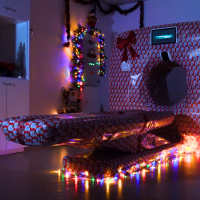We Provide American Medical Standards World Class Medical Staff State of the Art Facilities Prestigious Medical Services Cutting Edge Technologies Patient Centeredness
What is it?
Magnetic resonance imaging (MRI) is a medical imaging device, used to create comprehensive images of the organs and tissues in your body. This technique helps diagnose a plethora of diseases and injuries, through the use of magnetic fields and computer-generated radio waves. These large, tube-shaped machines can also produce 3D images that can be viewed from different angles for a better diagnosis.
How does it work?
This is a noninvasive procedure, allows the doctor to diagnose various diseases or injuries. When you lie inside an MRI machine, water molecules in your body are temporarily realigned by the magnetic fields while the radio waves generate signals from these aligned atoms to create cross-sectional images — like “slices in a loaf of bread”.


What diseases/injuries
Neurological
Respiratory
Musculoskeletal
Orthopedic
Gastrointestinal
Gynecological
Cardiac
Urinary
Oncological
What are the risks?

MRIs are completely safe when operated by the hands of professionals.. There is absolutely no radiation and the magnetic waves have no effects on the body after the procedure. However, because MRI uses powerful magnets, any presence of metal on or in your body can be a safety hazard. Before the examination therefore, you will be asked to remove all metal objects from your body (jewelry, belts, phones etc.) and you will be asked whether you have any metal or electronic devices in your body (pacemakers, bullet shrapnel, etc.). Even tattoos or permanent makeup, may contain traces of metal.
Before your MRI, you must state if you think you're pregnant or if you're breast-feeding, as you may receive contrast material during the procedure which may have adverse effects on the fetus.
Any kidney or liver problems should also be discussed with your doctor and the technologist, due to these organs potentially limiting the use of injected contrast agents during the scan.
Certifications – Accreditations:

Quality Management
Information Security
Health
& Safety











